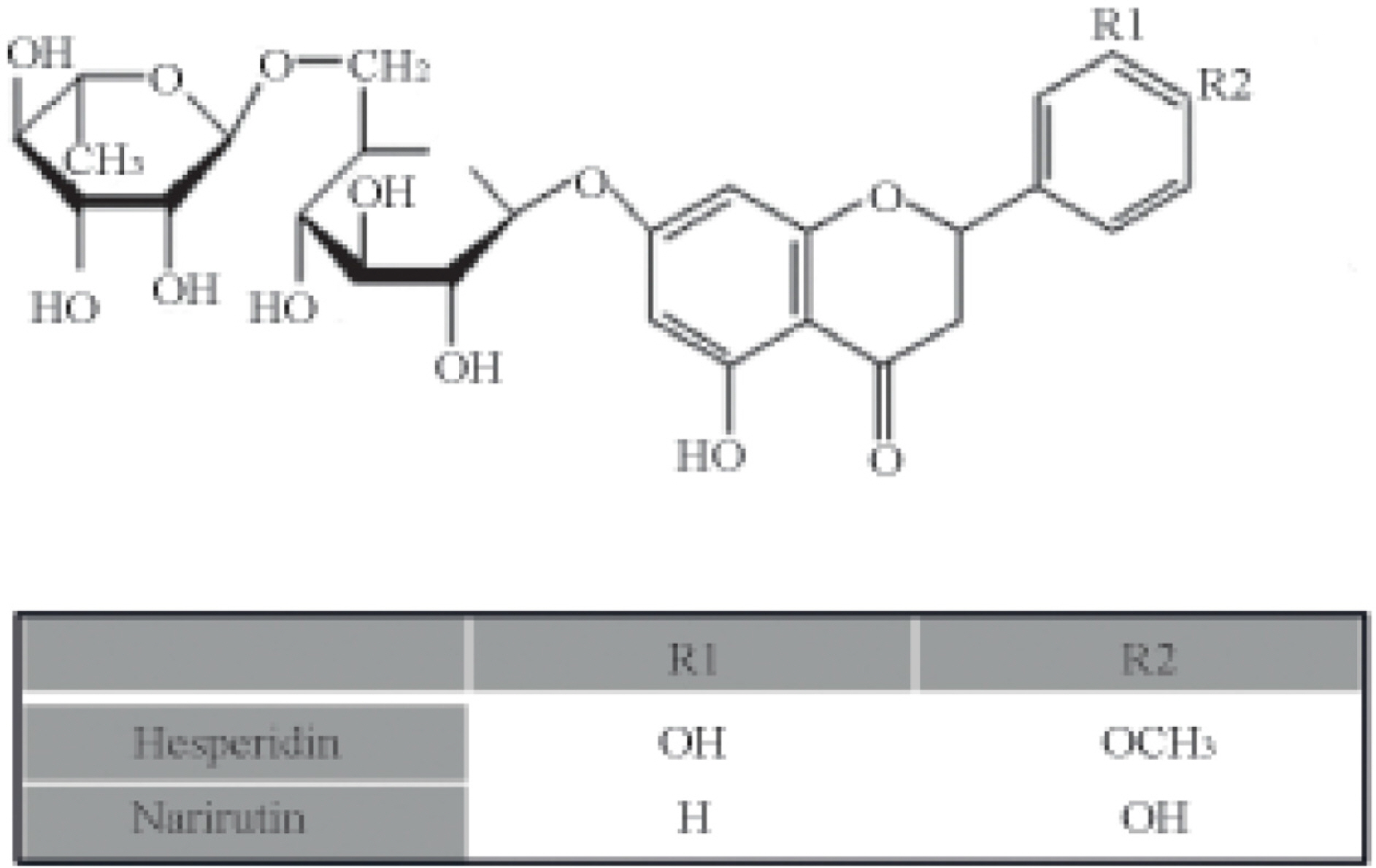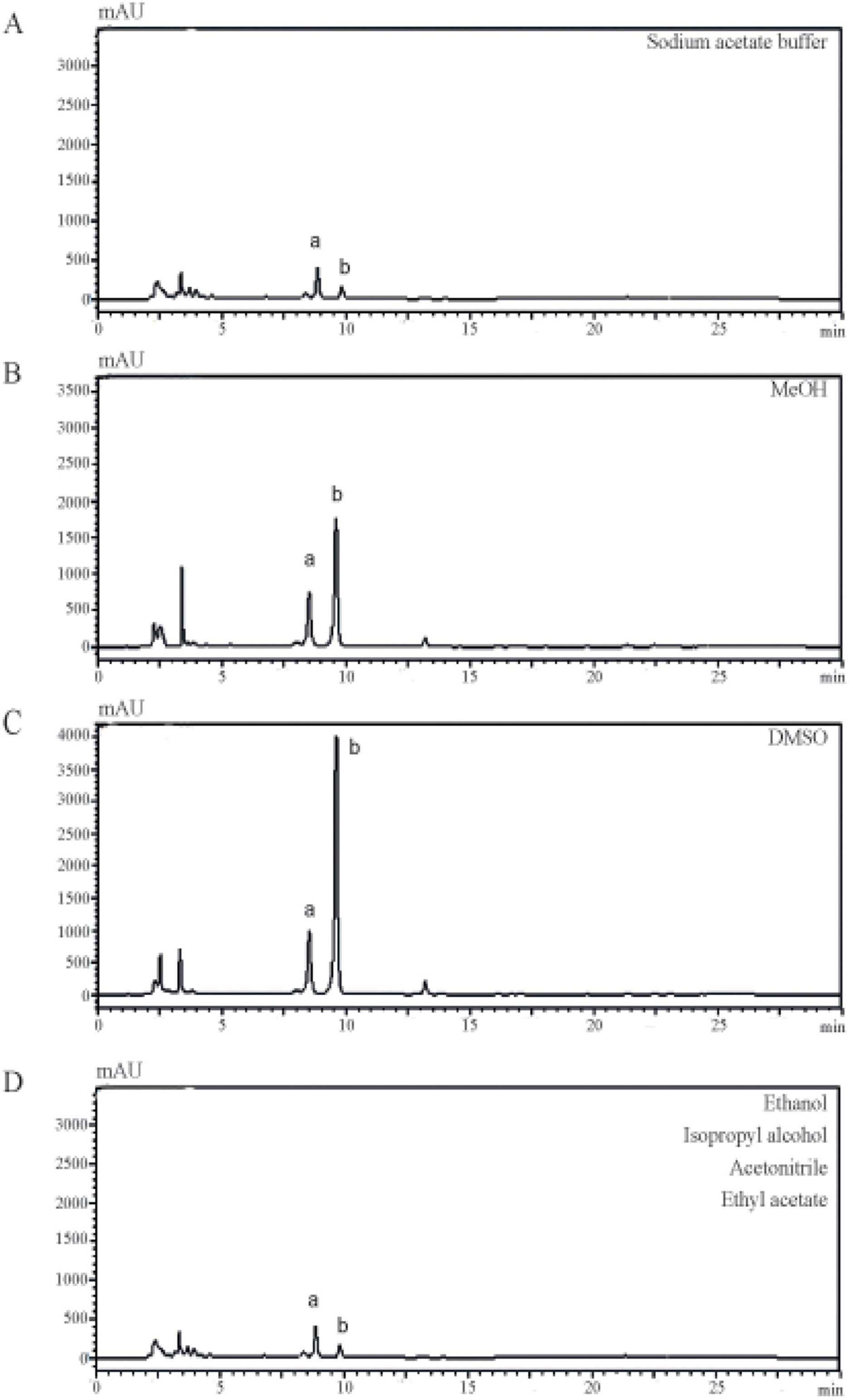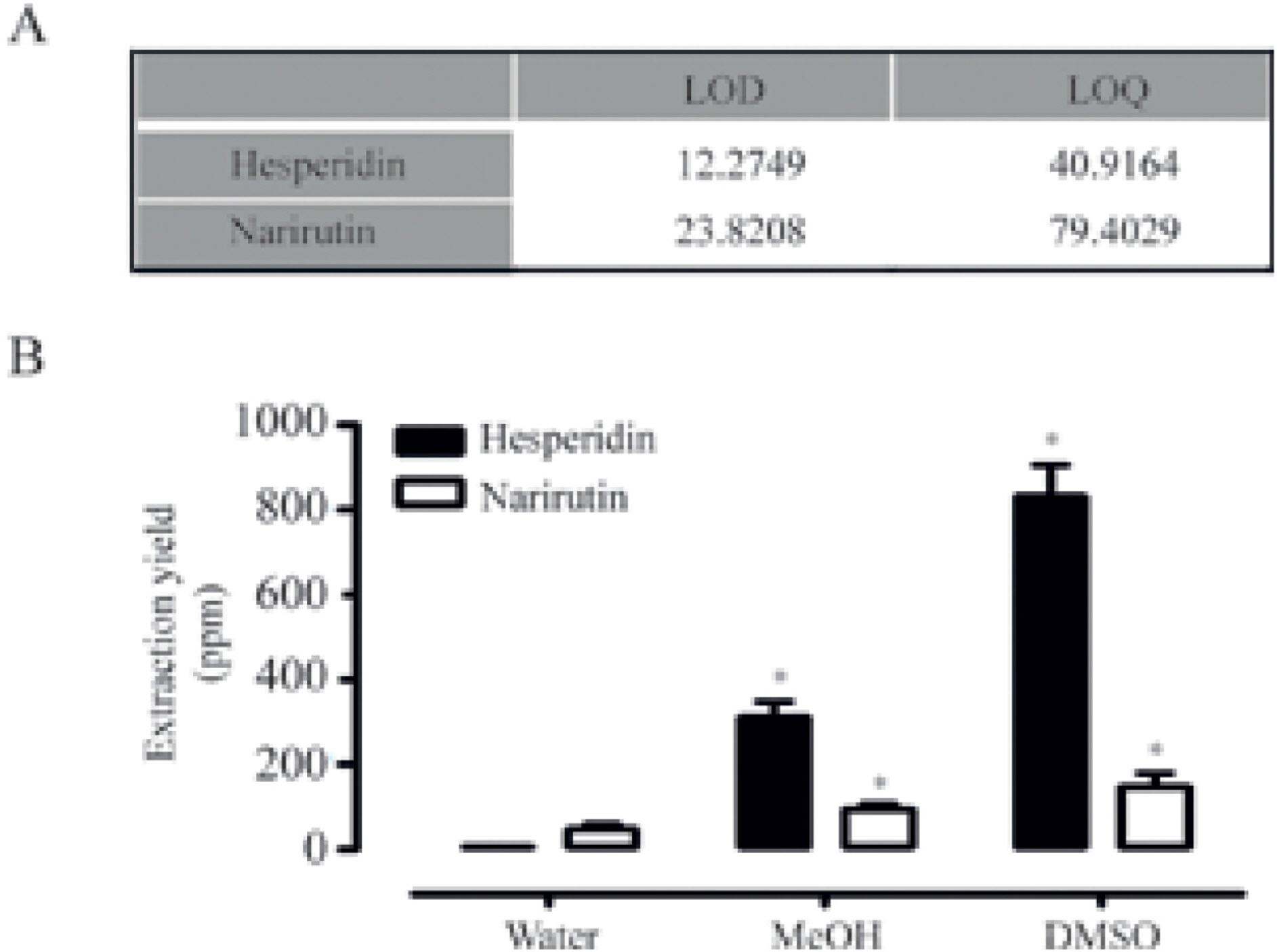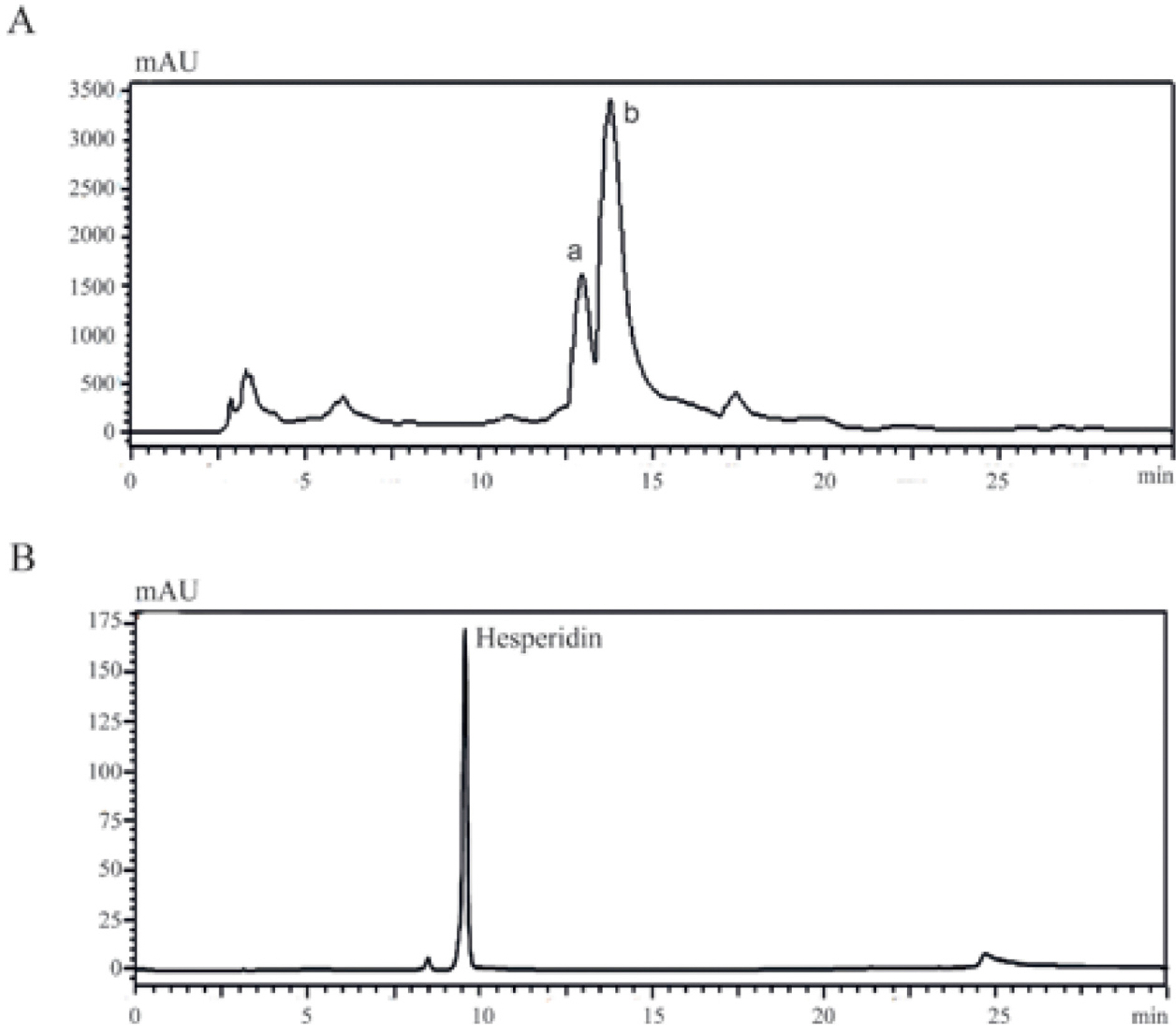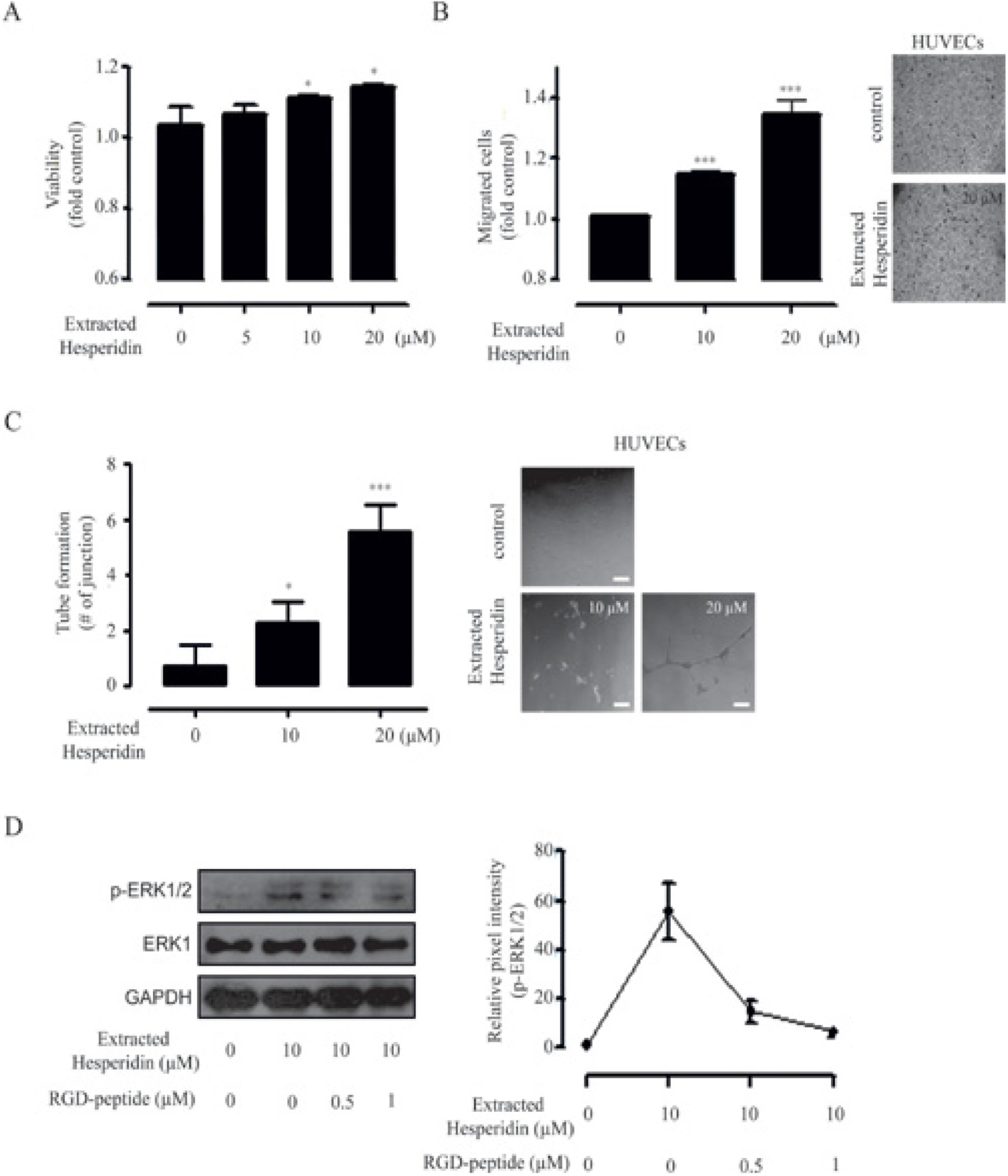Nat Prod Sci.
2016 Dec;22(4):287-292. 10.20307/nps.2016.22.4.287.
Maximization of Extracted Condition of Pro-angiogenic Components in Citrus unshiu Peels using Dimethyl Sulfoxide
- Affiliations
-
- 1College of Applied Life Science, SARI, Jeju National University, Jeju-do 690-756, Korea. sdjd1108@kaist.ac.kr kimjh@jejunu.ac.kr
- 2Subtropical/tropical Organism Gene Bank, Jeju National University, Jeju 63243, Republic of Korea.
- KMID: 2366698
- DOI: http://doi.org/10.20307/nps.2016.22.4.287
Abstract
- Aqueous extraction of Citrus unshiu peels (AECUP) is mainly comprised with pro-angiogenichesperidin and narirutin. In this study, we report approaches to increasing the yields of extracted hesperidin and narirutinfrom Citrus unshiu peels using proper solvents. Significantly improved yields of both compounds were obtained using methanol and dimethyl sulfoxide (DMSO) compared to acetonitrile, ethyl acetate, ethanol, and isopropyl alcohol. Especially, effect of DMSO was by far the better of the two solvents in extraction of hesperidin. In addition, the DMSO extracted hesperidin significantly induced the pro-angiogenic effects of human umbilical vein endothelial cells (HUVECs) and markedly up-regulated phosphorylation of the ERK1/2 signaling pathway. These results demonstrate that pro-angiogenic inducer; hesperidin and narirutin can be simply, easily, and effectively extracted from Citrus unshiu peels.
Keyword
MeSH Terms
Figure
Reference
-
References
(1). Choi I. Y.., Kim S. J.., Jeong H. J.., Park S. H.., Song Y. S.., Lee J. H.., Kang T. H.., Park J. H.., Hwang G. S.., Lee E. J.., Hong S. H.., Kim H. M.., Um J. Y.Mol. Cell. Biochem. 2007. 305:153–161.(2). Jeong S. M.., Kim S. Y.., Kim D. R.., Jo S. C.., Nam K. C.., Ahn D. U.., Lee S. C. J.Agric. Food Chem. 2004. 52:3389–3393.(3). Murakami A.., Nakamura Y.., Torikai K.., Tanaka T.., Koshiba T.., Koshimizu K.., Kuwahara S.., Takahashi Y.., Ogawa K.., Yano M.., Tokuda H.., Nishino H.., Mimaki Y.., Sashida Y.., Kitanaka S.., Ohigashi H.Cancer Res. 2000. 15:5059–5066.(4). Kim D. K.., Lee K. T.., Eun J. S.., Zee O. P.., Lim J. P.., Eum S. S.., Kim S. H.., Shin T. Y.Arch. Pharm. Res. 1999. 22:642–645.(5). Higashi-Okai K.., Kamimoto K.., Yoshioka A.., Okai Y.Phytother. Res. 2002. 16:781–784.(6). Manthey J. A.., Grohmann K. J.Agric. Food Chem. 2001. 49:3268–3273.(7). Chau C. F.., Huang Y. L. J.Agric. Food Chem. 2003. 51:2615–2618.(8). Llorach R.., Espín J. C.., Tomás-Barberán F. A.., Ferreres F. J.Agric. Food Chem. 2003. 51:2181–2187.(9). Lee J.., Yang D. S.., Han S. I.., Yun J. H.., Kim I. W.., Kim S. J.., Kim J. H. J.Med. Food. 2016. 19:569–577.(10). Khurana R.., Simons M.., Martin J. F.., Zachary I. C.Circulation. 2005. 112:1813–1824.(11). Folkman J.Nat. Med. 1995. 1:27–31.(12). Redlitz A.., Daum G.., Sage E. H. J.Vasc. Res. 1999. 36:28–34.(13). Teruyama K.., Abe M.., Nakano T.., Iwasaka-Yagi C.., Takahasi S.., Yamada S.., Sato Y. J.Cell. Physiol. 2001. 188:243–252.(14). Bucar F.., Wube A.., Schmid M.Nat. Prod. Rep. 2013. 30:525–545.(15). Lee J.., Han S. I.., Yun J. H.., Kim J. H.Tumour Biol. 2015. 36:9385–9393.(16). Lee J.., Kim J. H.PLoS one. 2016. 11:, e0155264.(17). Sanagi M. M.., Ling S. L.., Nasir Z.., Hermawan D.., Ibrahim W. A.., Abu Nami A. J.AOAC Int. 2009. 92:1833–1838.(18). Anwar F.., Przybylski R.Acta. Sci. Pol. Technol. Aliment. 2012. 11:293–301.(19). Jacob S. W.., Rosenbaum E. E.Headache. 1966. 6:127–136.(20). Jacob S. W.., Wood D. C.Am. J. Surg. 1967. 114:414–426.(21). Jacob S. W.Am. Surg. 1969. 35:564–573.(22). Wood D. C.., Weber F. S.., Palmquist M. A. J.Pharmacol Exp. Ther. 1971. 177:520–527.(23). Carmeliet P.Nature. 2005. 438:932–936.(24). Dor Y.., Djonov V.., Abramovitch R.., Itin A.., Fishman G. I.., Carmeliet P.., Goelman G.., Keshet E.EMBO J. 2002. 21:1939–1947.
- Full Text Links
- Actions
-
Cited
- CITED
-
- Close
- Share
- Similar articles
-
- Effect of Dimethyl Sulfoxide (DMSO) Monotherapy in Treatment of Interstitial Cystitis
- Terpenoids from Citrus unshiu Peels and Their Effects on NO Production
- Effects of Trypsin, Collagenase and Dimethyl Sulfoxide on Dissociation of Rat Heart Cells
- Optimization of Extraction Condition of Hesperidin in Citrus unshiu Peels using Response Surface Methodology
- Anti-Inflammatory Effect of Quercetagetin, an Active Component of Immature Citrus unshiu, in HaCaT Human Keratinocytes

